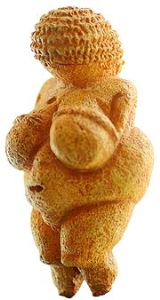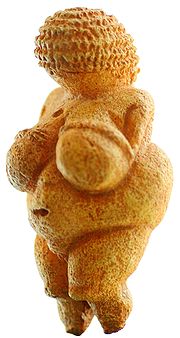
Superstimulus
Encyclopedia

Stimulation
Stimulation is the action of various agents on nerves, muscles, or a sensory end organ, by which activity is evoked; especially, the nervous impulse produced by various agents on nerves, or a sensory end organ, by which the part connected with the nerve is thrown into a state of activity.The word...
to which there is an existing response tendency, or any stimulus that elicits a response more strongly than the stimulus for which it evolved.
For example, a moth
Moth
A moth is an insect closely related to the butterfly, both being of the order Lepidoptera. Moths form the majority of this order; there are thought to be 150,000 to 250,000 different species of moth , with thousands of species yet to be described...
will spiral into a flame because it is adapted to navigate by the sun (a much more distant lightsource). When it comes to eggs, a bird can be made to prefer the artificial versions to their own, and humans can be similarly exploited by junk food
Junk food
Junk food is an informal term applied to some foods that are perceived to have little or no nutritional value ; to products with nutritional value, but which also have ingredients considered unhealthy when regularly eaten; or to those considered unhealthy to consume at all...
. The idea is that the elicited behaviours evolved for the "normal" stimuli of the ancestor's natural environment, but the behaviours are now hijacked by the supernormal stimulus.
Concept
The concept is derived from ethologyEthology
Ethology is the scientific study of animal behavior, and a sub-topic of zoology....
. Konrad Lorenz
Konrad Lorenz
Konrad Zacharias Lorenz was an Austrian zoologist, ethologist, and ornithologist. He shared the 1973 Nobel Prize with Nikolaas Tinbergen and Karl von Frisch...
observed that birds would select for brooding eggs that resembled those of their own species but were larger. Niko Tinbergen, following his extensive analysis of the stimulus features that elicited food-begging in the chick of the Herring Gull, constructed an artificial stimulus consisting of a red knitting needle with three white bands painted round it; this elicited a stronger response than an accurate three-dimensional model of the parent's head (white) and bill (yellow with a red spot).
Tinbergen and his students studied other variations this effect. He experimented with dummy plaster eggs of various sizes and markings finding that most birds preferred ones with more exaggerated markings than their own, more saturated versions of their color, and a larger size than their own. Small songbirds which laid light blue grey-dappled eggs preferred to sit on a bright blue black polka-dotted dummy so large they slid off repeatedly. Territorial male stickleback fish would attack wooden floats with red undersides—attacking them more vigorously than invading male sticklebacks if the underside were redder.
Lorenz and Tinbergen accounted for the supernormal stimulus effect in terms of the concept of the innate releasing mechanism; however this concept is no longer widely used. The core observation that simple features of stimuli may be sufficient to trigger a complex response remains valid, however.
Harvard psychologist Deirdre Barrett
Deirdre Barrett
Deirdre Barrett, Ph.D. is an author and psychologist who teaches at Harvard Medical School. She is known for her research on dreams, hypnosis, and imagery and has written on evolutionary psychology. Barrett is a Past President of The International Association for the Study of Dreams and of the...
argues that supernormal stimulation govern the behavior of humans as powerfully as that of animals. In her 2010 book, Supernormal Stimuli: How Primal Urges Overran Their Evolutionary Purpose, she examines the impact of supernormal stimuli on the diversion of impulses for nurturing, sexuality, romance, territoriality, defense, and the entertainment industry’s hijacking of our social instincts. In the earlier book, Waistland, she explains junk food
Junk food
Junk food is an informal term applied to some foods that are perceived to have little or no nutritional value ; to products with nutritional value, but which also have ingredients considered unhealthy when regularly eaten; or to those considered unhealthy to consume at all...
as an exaggerated stimulus to cravings for salt, sugar, and fats and television
Television
Television is a telecommunication medium for transmitting and receiving moving images that can be monochrome or colored, with accompanying sound...
as an exaggeration of social cues of laughter, smiling faces and attention-grabbing action. Modern artifacts may activate instinct
Instinct
Instinct or innate behavior is the inherent inclination of a living organism toward a particular behavior.The simplest example of an instinctive behavior is a fixed action pattern, in which a very short to medium length sequence of actions, without variation, are carried out in response to a...
ive responses which evolved in a world without magazine centerfolds or double cheeseburgers, where breast development was a sign of health and fertility in a prospective mate, and fat was a rare and vital nutrient.
An episode of the PBS science show NOVA
NOVA (TV series)
Nova is a popular science television series from the U.S. produced by WGBH Boston. It can be seen on the Public Broadcasting Service in the United States, and in more than 100 other countries...
showed an Australian beetle species whose males were sexually attracted to large and orange females—the larger and more orange the better. This became a problem when the males started to attempt to mate with certain beer bottles that were just the right color. The males were more attracted to the bottles than to actual females.

